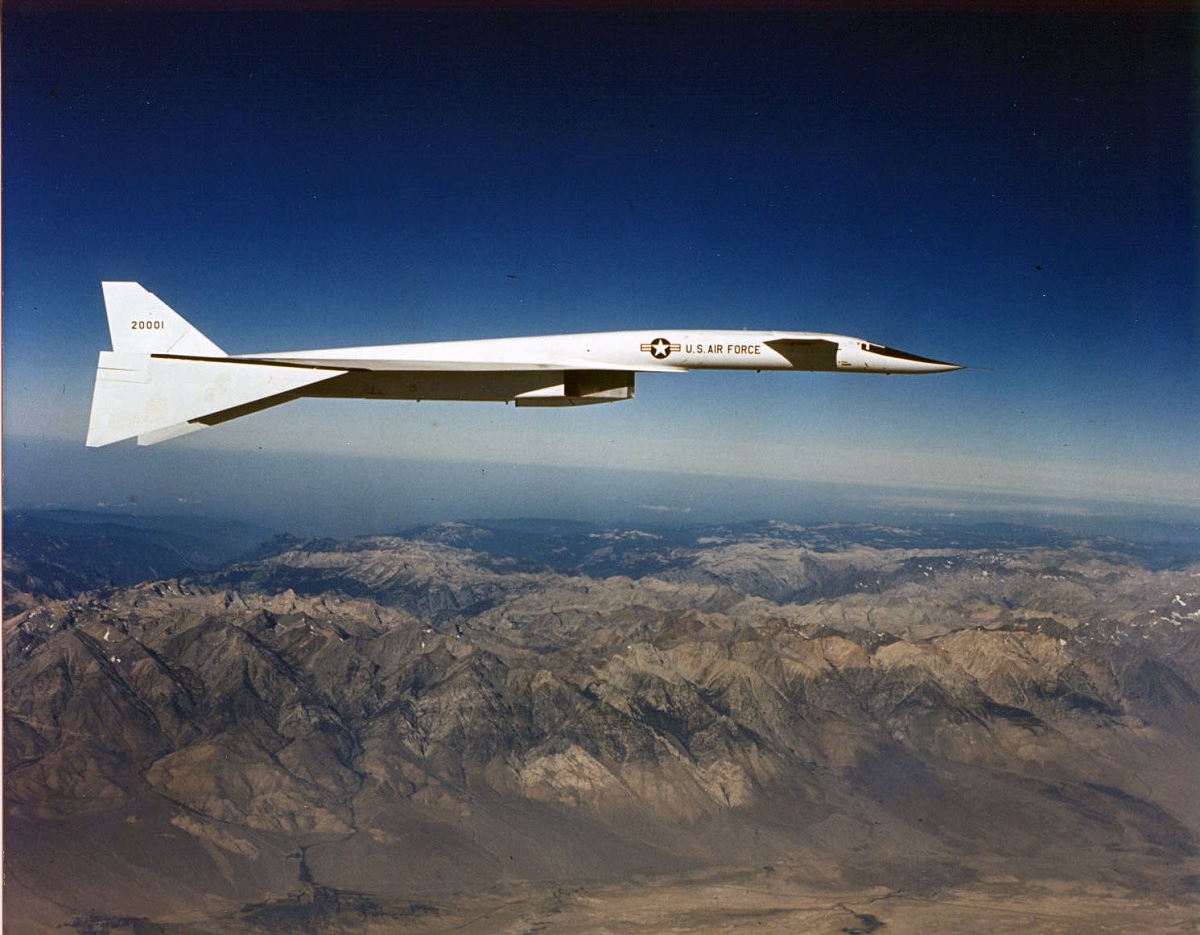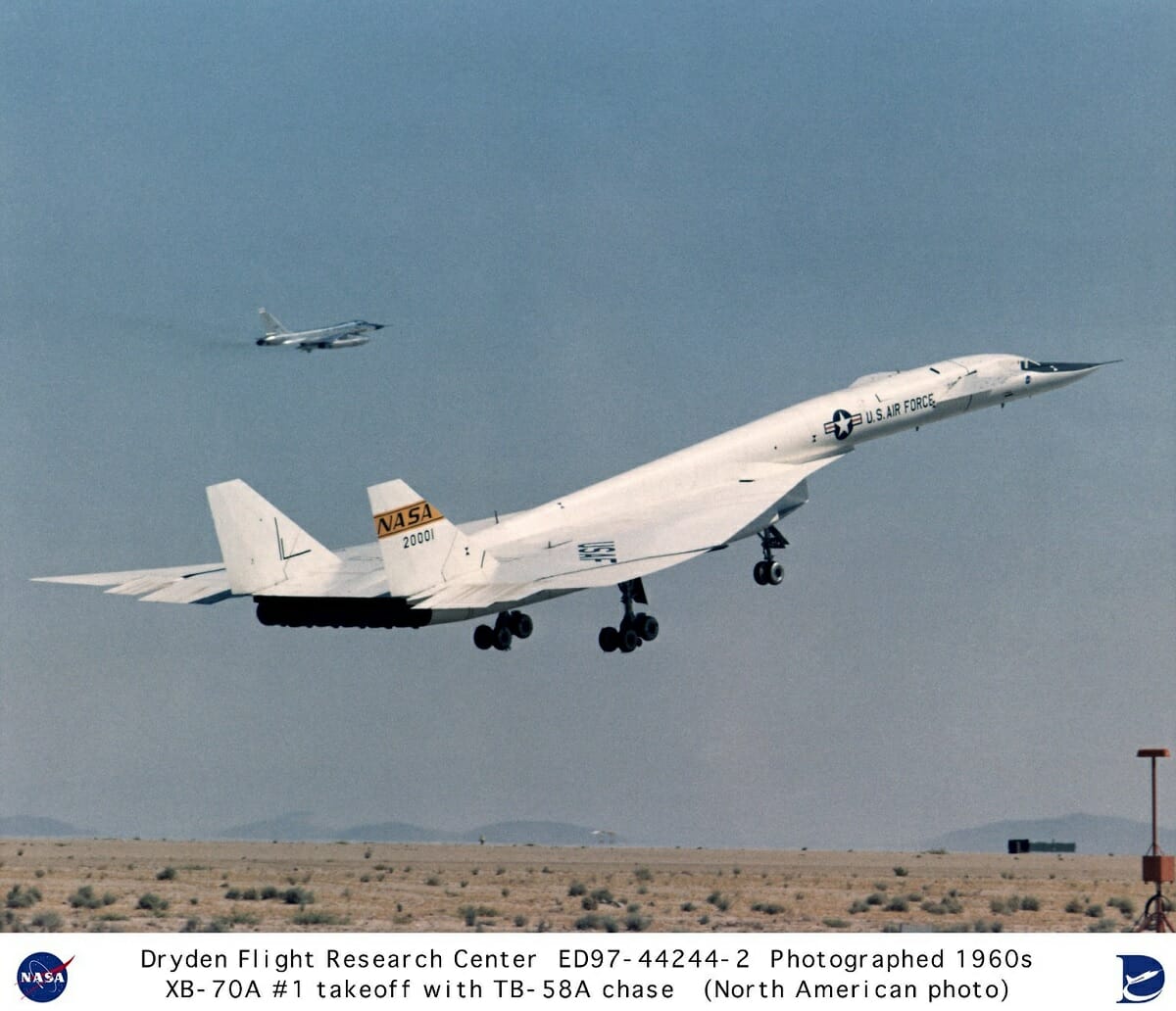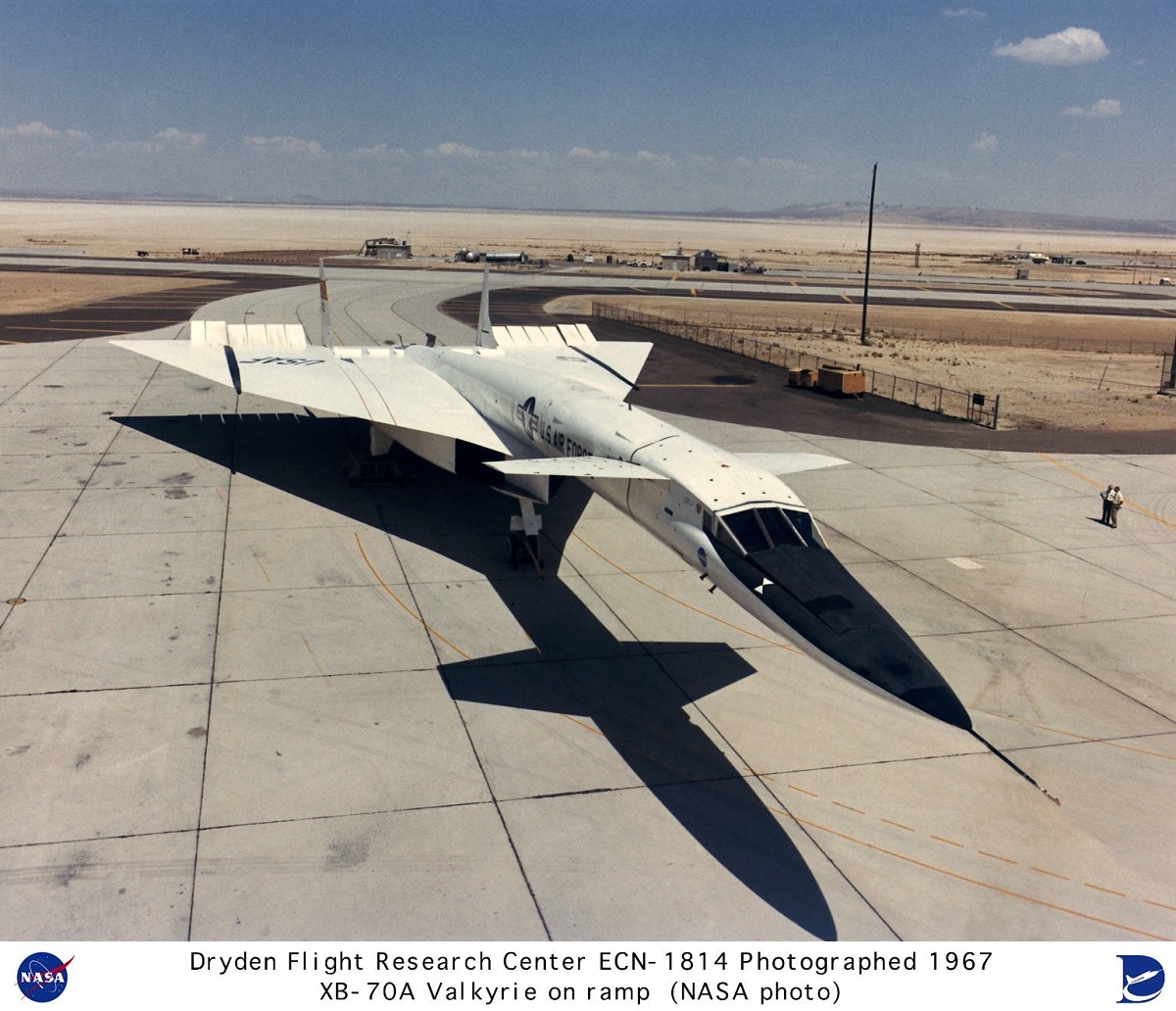The XB-70 Valkyrie, the largest experimental aircraft ever built, was meant to gather data while in flight for use in developing both military and commercial supersonic aircraft
The futuristic XB-70A Valkyrie was initially imagined in the 1950s as a high-altitude, nuclear strike bomber with the ability to fly at Mach 3 (three times the speed of sound), rendering any prospective foe defenseless.
But by the start of the 1960s, brand-new Surface-to-Air Missiles (SAMs) posed a danger to the capacity of fast, high-altitude bombers to survive. So, Intercontinental Ballistic Missiles (ICBMs), which are less expensive, were also going into service.
As a result, the pricey B-70 bomber program was abandoned in 1961 before any Valkyries were finished or sent into service. Nevertheless, the USAF purchased two XB-70As for use in joint flight research with NASA’s Flight Research Center (FRC), the forerunner to the present-day NASA Dryden Flight Research Center.

The first flight of the XB-70 was made on Sept. 21, 1964.
The XB-70 was designed by North American Aviation, which later became North American Rockwell and then a branch of Boeing. It had a long fuselage and a canard (or horizontal stabilizer) that was located directly behind the crew cabin. Its delta wing featured a 65.6 percent steep sweep. In flight, the wing’s outer section could be folded down to provide lateral-directional stability. There were also two windshields on the plane. For high-speed flying, a movable outer windshield was raised to save drag and lowered for better visibility during takeoff and landing.
Frames and skin made of titanium were riveted together to form the forward fuselage. The remaining parts of the aircraft were made primarily of stainless steel. The skin was made of honeycomb-shaped brazed stainless steel. The XB-70 was powered by six General Electric YJ93-3 turbojet engines, each with a thrust rating of 30,000 pounds. In order to retain the most effective airflow to the engines, the interior geometry of the inlets could be changed.
The XB-70, the largest experimental aircraft ever built, was meant to gather in-flight data to help in the construction of upcoming supersonic aircraft, both military and commercial. It was capable of Mach 3 flight at altitudes of 70,000 feet.

The XB-70 flight research program’s main goals included analyzing the aircraft’s stability and handling characteristics, analyzing how it responded to turbulence in the atmosphere, and figuring out how well it performed in terms of aerodynamics and propulsion. Secondary goals included calculating the levels and amount of engine noise during takeoff, landing, and ground operations. They also included measuring the noise and friction related to airflow over the aircraft.
During research flights, the aircraft was typically escorted by a TB-58 chase plane. This is due to the fact that the TB-58 (a prototype B-58 adapted as a trainer) was able to maintain close proximity to the XB-70 while it was doing its research maneuvers thanks to its dash speed of Mach 2. The slower TB-58 could often keep up with the faster XB-70 when it was flying at or near Mach 3 by flying lower and avoiding the curves in the XB-70’s flight path when they occurred.
In March 1967, NASA was given responsibility for program management of the NASA-USAF research endeavor. Notably, the first Valkyrie continued to fly and produce useful test data in the research program until its final flight on February 4, 1969, whereas the number two XB-70 was destroyed in an unintentional mid-air collision on June 8, 1966.

Photo by U.S. Air Force and NASA

